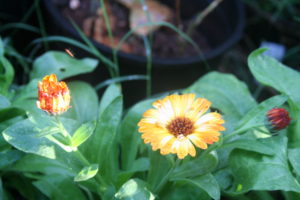Pandan
Pandan leaves is widely used in the Philippines as a food flavoring especially with rice cakes. I would consider it as a tropical herb just like lemongrass. The plant has long, green bladelike leaves just like the amaryllis, hence the botanical name pandanus amaryllifolius, with aerial roots and grows up to at least 3 ft. high. It is different from the other pandanus plant which is used in making mats and hats in the Philippines. They grow tall like palm trees with spinelike in the leaves and we call it “buri”.
In my garden it thrives in a little bit of shade and lots of moisture. It is easy to grow from cuttings.
The aroma of the pandan leaves makes it useful in Southeast Asian cuisine. The Filipinos used it to flavor rice, and to flavor gelatine or agar-agar used in “buko pandan” salad. I use it in making rice cakes we call “bibingka” and topped with coconut-caramel sauce. I also use the leaves to flavor a dessert we call “guinatan”. It is a mixture of tropical fruits like jackfruit and cooking banana or plantain we call”saba”. We also use sweet potatoes and/or taro root and also mochi rice or glutinous rice flour shaped into balls we call “bilo-bilo”. I gather the leaves when they get wild and freeze them for future use. I remember seeing them in the frozen food section of the Filipino Food stores in California, that’s where I got the idea of freezing them. The remaining part with the roots, I put it back in the soil and pretty soon it will become a full plant ready for harvesting again. I never see it flower but it produces small plants on the side so I can say that it is a perennial plant. You’ll never run out of pandan leaves for various uses ever. The plant doesn’t have problems with insects but slugs will sometimes bite on their aromatic leaves.

